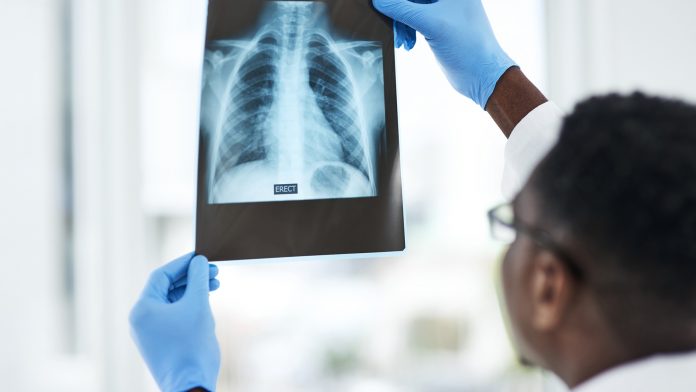
A new study finds that some people recovering from COVID-19 pneumonia have CT evidence of lung damage persisting for a full year following infection.
The spread of SARS-CoV-2 devastated the world, with infection rates increasing at an alarming rate during its peak. COVID-19 caused short-term lung damage in the form of pneumonia, however, the long-term effect on the lungs is relatively unstudied.
As part of an Austria-based observational study on the development of lung disease in patients with SARS-CoV-2 infection, researchers analysed patterns and rates of improvement of chest CT abnormalities in patients one year after COVID-19 pneumonia.
The study was published in the journal Radiology.
Assessing lung damage
The researchers assessed lung damage and abnormalities on chest CT scans in 91 participants with a mean age of 59 years old at several points over one year after the onset of COVID-19 symptoms.
At one year, CT abnormalities were present in 49 or 54% of the 91 participants. Of these 49 participants, two had received outpatient treatment only, whilst 25 were treated on a general hospital ward and 22 had received intensive care unit treatment for lung damage.
“The observed chest CT abnormalities from our study are indicative of damaged lung tissue,” said study co-author Anna Luger, MD, from the Department of Radiology at Innsbruck Medical University in Innsbruck, Austria. “However, it is currently unclear if they represent persistent scarring, and whether they regress over time or lead to pulmonary fibrosis.”
The researchers noted that the lung damage decreased in initial follow-ups, 63% of participants with abnormalities did not show any further improvement after six months. Persistent lung damage shown on CT at one year was persistent with certain characteristics such as adults aged 60 years and over, critical COVID-19 severity and male gender.
SARS-CoV-1 outbreak
Evidence from the SARS-CoV-1 outbreak of 2002 to 2004 showed that lung damage may remain detectable even after decades, but does not show any progression, according to study co-author Leonhard Gruber, MD, from the Department of Radiology at Innsbruck Medical University. Recent studies, though, have shown a risk of progression of lung abnormalities such as the ones depicted on CT.
“In a recently published clinical study of our CovILD interdisciplinary working group, we were able to show that the severity of acute COVID-19, protracted systemic inflammation and the presence of residual chest CT abnormalities are strongly related to persistently impaired lung function and clinical symptoms,” said study co-author Christoph Schwabl, MD, from Innsbruck Medical University.
The study underscores radiology’s role in helping identify patients at risk for post-COVID-19 consequences such as lung damage and assisting in COVID-19 follow-up management.
“In the end, long-term follow-up, both clinical and radiological, is necessary to gather more information about the course and clinical role of persisting SARS-CoV-2 related chest CT abnormalities,” said study senior author Gerlig Widmann, MD, chief thoracic radiologist at Innsbruck Medical University.
The researchers intend to continue gathering data on patients with persistent CT abnormalities










